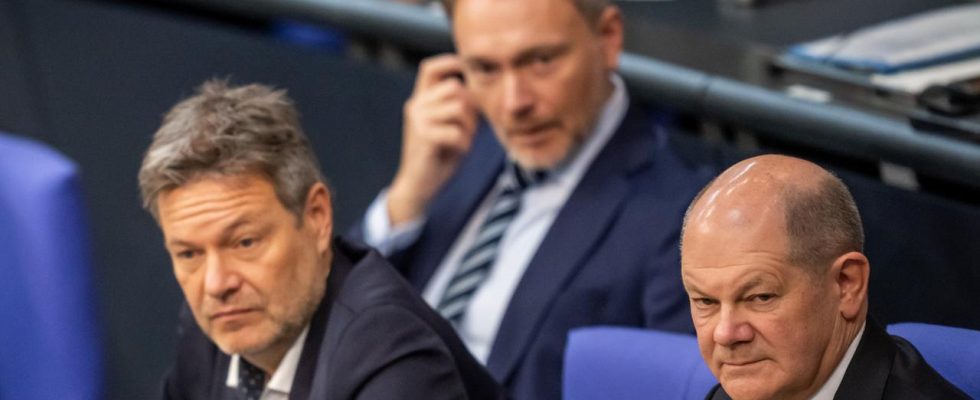analysis
The leaders of the traffic light coalition are looking for a way out of the budget crisis. The economy is pressing and some projects are on the brink. What makes the conversations so difficult – and exactly how much money is involved?
Especially in the economy, people are worried about the impasse in budget matters. “We don’t have a budget crisis, but rather a decision-making crisis with a lack of willingness to compromise,” complains employers’ president Rainer Dulger. Savings of 17 billion euros in a federal budget with a volume of more than 450 billion euros must be possible, said Dulger. Similar voices also come from politics. But what billions are we talking about?
17 billion – beyond the debt brake
According to Finance Minister Christian Lindner (FDP), the said 17 billion euros are missing from the actual federal budget for 2024. The background is decisions made by the traffic light coalition, which resulted in additional costs compared to the original budget draft.
The coalition significantly increased the rates for citizens’ money on January 1st. It has promised the states and municipalities additional funds to deal with the refugee crisis. She has announced that she will increase aid to Ukraine. And she has reversed cuts that were included in Lindner’s budget draft from the summer – for example in the federal voluntary services and the job centers.
The cuts in parental allowance should also be less severe than initially planned. None of this has anything to do with the Karlsruhe judgment on the debt brake.
Another hole in the climate and Transformation Fund
It’s different with the oft-mentioned 60 billion euros. According to the Federal Constitutional Court’s decision, these are missing from the Climate and Transformation Fund. The Karlsruhe judges viewed the reallocation of Corona debt to other projects as a circumvention of the debt brake.
Now these 60 billion do not have to be saved in one fell swoop, because the fund has its own income and also decent reserves. But action is needed for part of the 60 billion, otherwise expenditure that is actually planned for next year cannot be financed. According to SPD General Secretary Kevin Kühnert, this amounts to 13 billion euros.
These 13 billion are in addition to the 17 billion – the need for action for the federal government is already 30 billion euros.
5.5 billion to support the economy
And there is another pot that is affected by the Karlsruhe ruling: the economic stabilization fund, which the federal government is closing early at the end of the year. Actually, further energy price support should have flowed from this fund next year. In particular, 5.5 billion euros are currently being discussed to reduce electricity fees – through a subsidy for network fees. These are responsible for a significant part of the electricity costs.
The traffic light government now has two options: Either it abandons this plan, which would mean higher electricity prices for consumers and companies. Or it has to finance the billions necessary for this from the federal budget. This would increase the hole in the budget to at least 35 billion euros. The taking on of debt, to the extent that it is possible within the framework of the debt brake, is already taken into account.
And a few billion more on top of that?
But that’s not all. Some government projects have not yet appeared in any of these items. Finance Minister Lindner wants to increase the basic tax allowance and the child allowance on January 1st more than previously decided. According to Lindner, the basic allowance – this is the amount for which no taxes have to be paid at all – should increase to 11,784 euros (previously: 10,908 euros), and the child allowance should increase to 6,612 euros (previously: 6,024 euros). However, the corresponding relief for taxpayers is associated with additional loss of revenue for the federal, state and local governments.
In addition, twelve billion euros are to be made available in the 2024 federal budget for the so-called “stock pension”, the income from which will be used to stabilize the statutory pension insurance in the 2030s. The advantage for Lindner in this project: He can take on more debt to finance this multi-billion dollar expenditure because the corresponding expenditure has an equivalent value.
Hans-Joachim Vieweger, ARD Berlin, tagesschau, December 12, 2023 1:08 p.m

